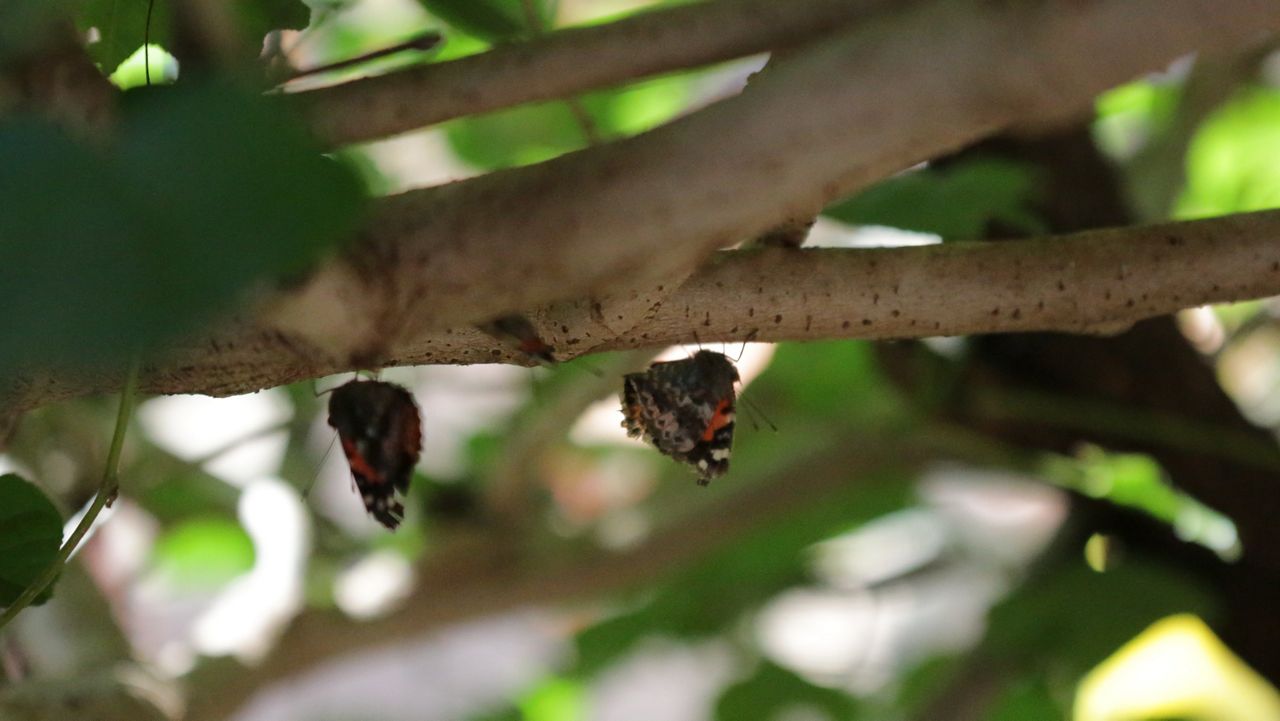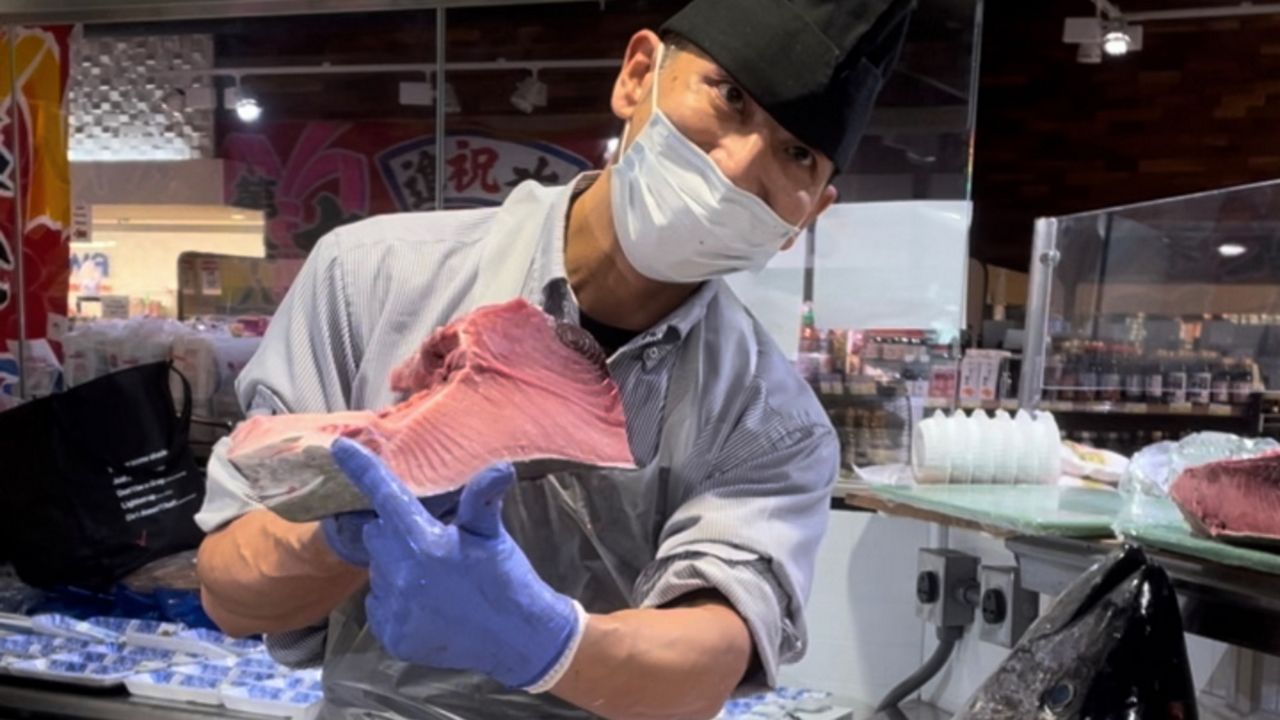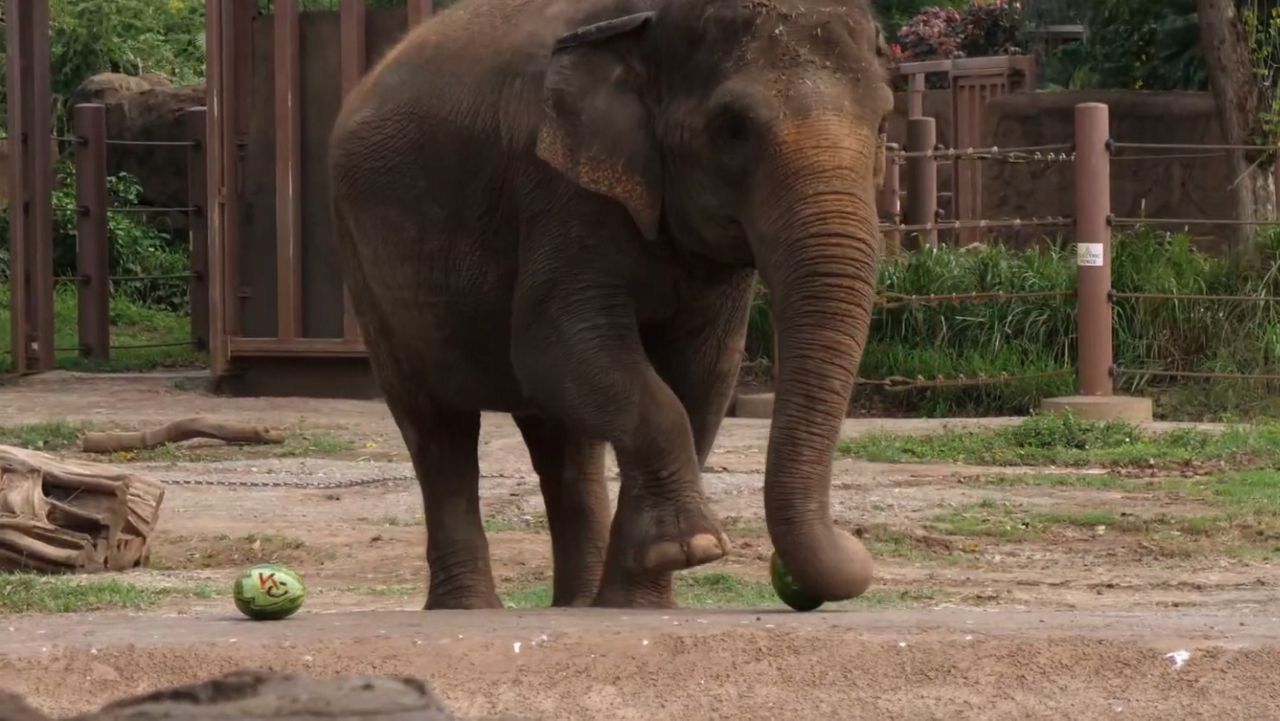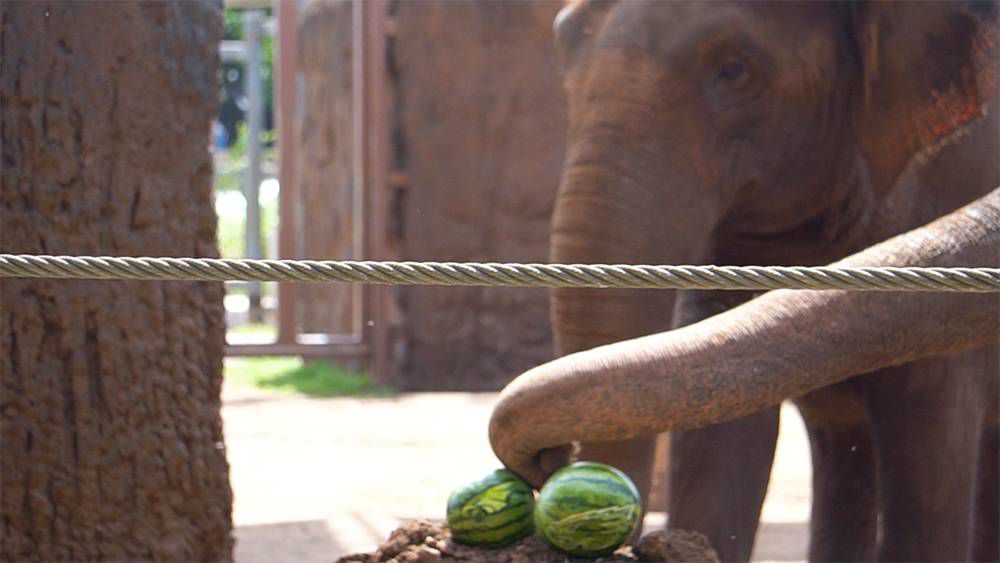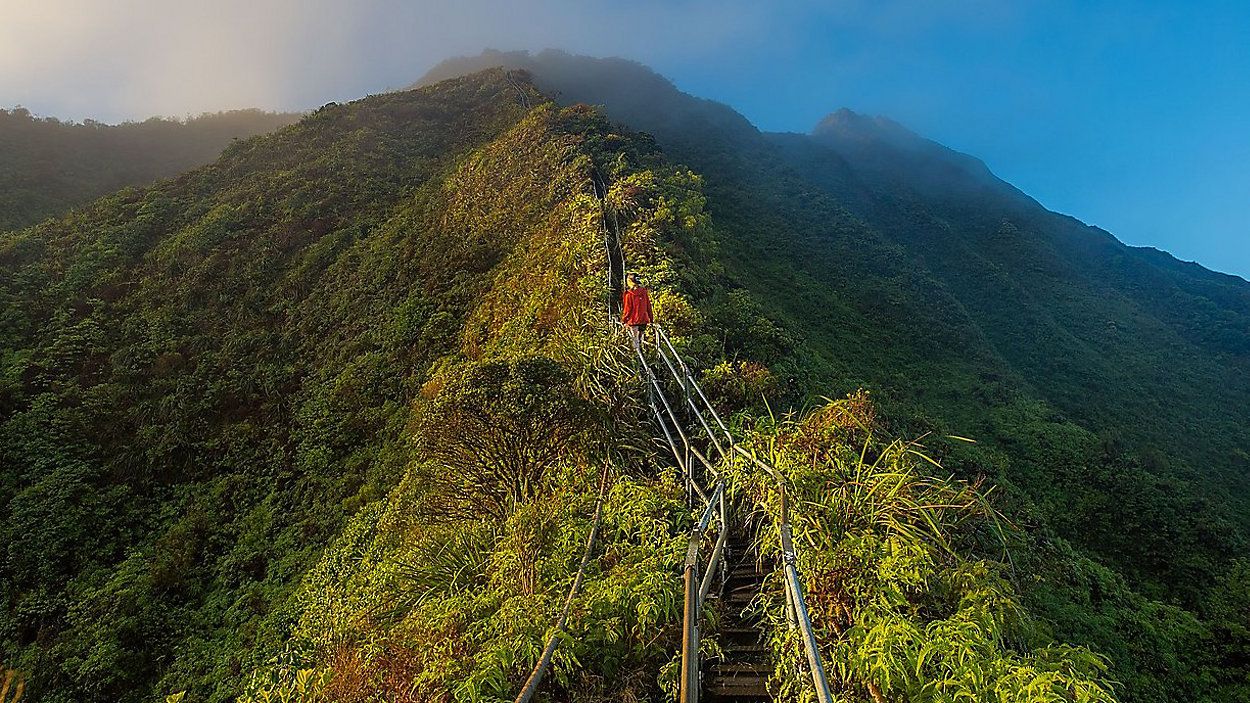HONOLULU — Kamehameha butterflies fly all around Kale Taylor as he stands in the Honolulu Zoo’s butterfly exhibit. Eventually, one lands on his hand.
Taylor is a zookeeper at the Honolulu Zoo, where he works with about 30 different creatures, including the Kamehameha butterflies, Japanese giant salamanders, smoky jungle frogs, pink-winged stick insects, tarantulas, Komodo dragons, and many more.
On a hot summer day in July, Taylor took Spectrum News into the zoo’s butterfly exhibit. To enter, we pass through two doors and a curtain made of chains, which keep the winged insects from escaping.
In the center of the exhibit is a mamaki tree, where the butterflies land and lay their eggs. Nearby, a papaya sits on a plate that is placed amidst palapalai ferns for the butterflies to snack on. Saucers full of sugar water, which Taylor calls “nectar cups,” are set around the exhibit for the butterflies to drink. A mister, like in the produce aisle at a grocery store, occasionally sprinkles water.
Kamehameha butterflies, also known as pulelehua, are one of two butterfly species endemic to Hawaii. They have reddish orange and black wings that span about 2.5 inches.
“I lived here my whole life, and I didn't even know Hawaii had a butterfly until I started working with them,” said Taylor.
Before starting his job at the Honolulu Zoo, the 42-year-old worked as a photographer, dog groomer and veterinarian technician. In 2015, Taylor started volunteering at what is now known as the zoo’s Ectotherm Complex, because he wanted to work with reptiles. After volunteering for a year, the zoo posted a job opening and Taylor was hired.
“I've always been interested in animals ever since I was little, catching lizards,” said Taylor.
While there aren’t a lot of reptiles in Hawaii, Taylor said he caught anoles, skinks, geckos, and occasionally poison dart frogs in Manoa.
Now that he works with the Kamehameha butterflies, Taylor is dedicated to their wellbeing. To show his love for the tiny creatures, he wears butterfly socks with his work boots.
The butterfly eggs, caterpillars and chrysalis are housed in a temperature-controlled room near the butterfly exhibit. Inside this room, Taylor shows Spectrum News a cup with four butterfly eggs attached to a mamaki leaf. They look like beads.
The eggs are collected from the butterfly exhibit and brought to the temperature-controlled room. When the caterpillars first hatch, they tend to be green or gray. As the caterpillars grow and molt, they change color. Eventually, the caterpillars’ bodies usually turn light green and are covered with spines.
Shelves are filled with plastic containers labeled “caterpillars.” Inside the containers are 107 small plastic cups and each one houses an individual caterpillar. The caterpillars are kept separate to avoid the spread of disease.
The cups have lids on them and holes for the insects to breathe. In the cups, Taylor places a few mamaki leaves for the caterpillars to eat. Every day, Taylor and his team pick fresh mamaki leaves, which are grown on the Honolulu Zoo grounds, to replenish the caterpillars' food supply.
In time, each caterpillar will become a chrysalis, hanging from the lid of a cup. The Kamehameha butterflies have particularly striking chrysalis, with each one having a distinct variation in colors. Taylor shows Spectrum News a chrysalis with inflections of gold, silver and orange, which shimmer in the light. The butterflies emerge slowly from their chrysalis over many hours, according to Taylor, who has filmed a time lapse of the process.
“Once they get out of the cocoon, then they will hang there for a while before their wings dry and they can actually fly,’ said Taylor.
The male butterflies have orange dots on their wings, while the females have white dots, making it easy to tell them apart. After transforming into butterflies, they only live for about three weeks. A few days into their butterfly lives, they will mate and the females will start laying eggs.
Kamehameha butterflies are classified as a vulnerable species. In the wild, they live in high-elevation native forests where mamaki trees thrive. Unfortunately, these forests are shrinking. They are also considered vulnerable because they are eaten by invasive birds, who are able to easily snatch them after they emerge from their chrysalis and have to dry.
Taylor is proud of the work the Honolulu Zoo’s butterfly exhibit does to educate the public about Kamehameha butterflies. He hopes young people appreciate that it is special to have butterflies in Hawaii, which can’t be found anywhere else.
Michelle Broder Van Dyke covers the Hawaiian Islands for Spectrum News Hawaii. Email her at michelle.brodervandyke@charter.com.




